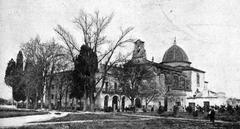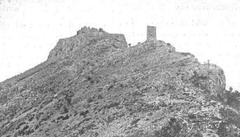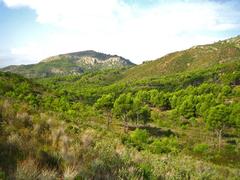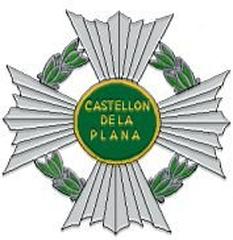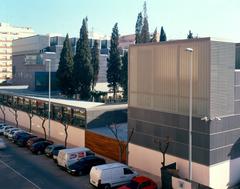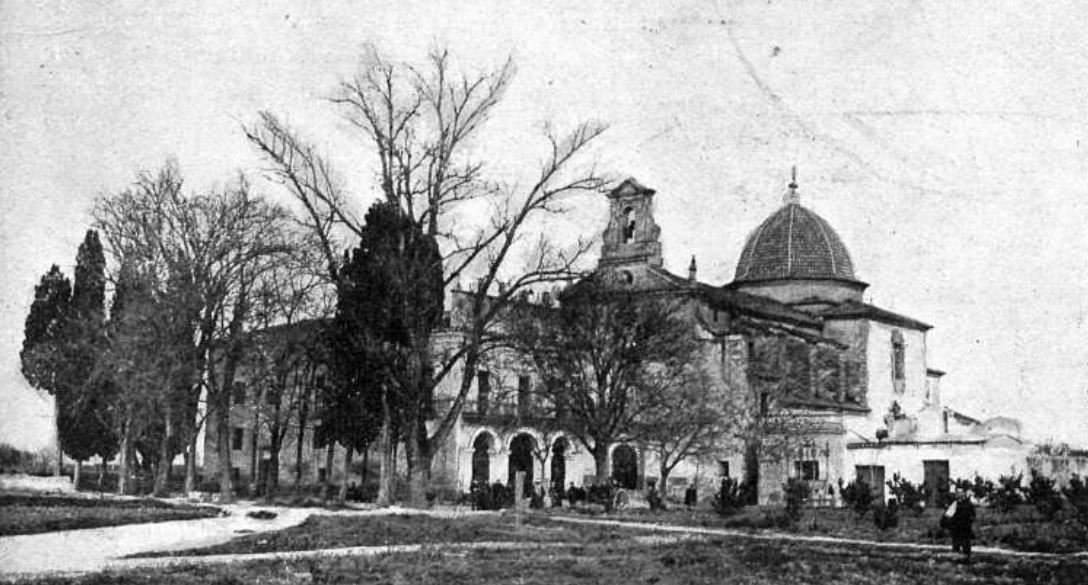
Comprehensive Guide to Visiting Basílica de Nuestra Señora del Lledó, Castelló de la Plana, Spain
Date: 24/07/2024
Introduction
The Basílica de Nuestra Señora del Lledó in Castelló de la Plana, Spain, is a remarkable blend of historical, cultural, and religious significance. This basilica traces its origins back to 1366, when a local farmer, Perot de Granyana, discovered a small image of the Virgin Mary while plowing his field. The discovery of this image, known as the Virgen del Lledó, marked the beginning of a centuries-long tradition of veneration, attracting pilgrims from across the region (Castellón Turismo). Over the years, the basilica has undergone significant expansions and transformations, evolving from a modest hermitage to the largest rural sanctuary in the Valencian region. Its architectural journey reflects a blend of Gothic, Renaissance, and Baroque styles, underscoring its historical evolution and the various cultural influences that have shaped it (Basílica del Lledó).
Today, the Basílica de Nuestra Señora del Lledó stands as a testament to the rich religious and cultural heritage of Castelló de la Plana. It continues to be a focal point for numerous religious celebrations and pilgrimages, particularly during the annual Fiesta del Lledó, held on the first Sunday of May (Castellón Turismo). This guide aims to provide comprehensive information for potential visitors, covering everything from the basilica’s history and significance to practical visitor tips, nearby attractions, and accessibility features.
Table of Contents
- [History of Basílica de Nuestra Señora del Lledó](#history-of-basílica-de-nuestra-señora-del-lledóhistory-of-basílica-de-nuestra-señora-del-lledó)
- [Origins and Early History](#origins-and-early-historyorigins-and-early-history)
- [Development and Expansion](#development-and-expansiondevelopment-and-expansion)
- [18th Century Transformation](#18th-century-transformation18th-century-transformation)
- [20th Century Recognition and Restoration](#20th-century-recognition-and-restoration20th-century-recognition-and-restoration)
- [Visitor Information](#visitor-informationvisitor-information)
- [Opening Hours](#opening-hoursopening-hours)
- [Tickets](#ticketstickets)
- [Travel Tips](#travel-tipstravel-tips)
- [Nearby Attractions](#nearby-attractionsnearby-attractions)
- [Accessibility](#accessibilityaccessibility)
- [Preservation and Modernization Efforts](#preservation-and-modernization-effortspreservation-and-modernization-efforts)
- [FAQ](#faqfaq)
- [Conclusion](#conclusionconclusion)
- [References](#referencesreferences)
History of Basílica de Nuestra Señora del Lledó
Origins and Early History
The origins of the Basílica de Nuestra Señora del Lledó date back to 1366 when a local farmer named Perot de Granyana discovered a small image of the Virgin Mary while plowing his field. This image, measuring only about 6 centimeters, was found at the base of an elm tree (lledoner in Catalan), which led to the Virgin being named “Nuestra Señora del Lledó” (Castellón Turismo). The discovery quickly became a focal point of veneration, attracting pilgrims from the surrounding regions.
Development and Expansion
Following the discovery, a small hermitage was erected on the site to house the image. This initial structure, known to have existed since the late 14th century, was a modest building that served the local community and visiting pilgrims. Over the centuries, the hermitage underwent several expansions and renovations to accommodate the growing number of devotees. In 1559, the first Cofradía del Lledó (Brotherhood of Lledó) was established, marking a significant step in the institutionalization of the site as a place of worship (Basílica del Lledó). By 1572, the current façade of the church was constructed, and further significant renovations took place in the 17th century, resulting in a three-nave church with a dome and lantern.
18th Century Transformation
The most substantial transformation of the Basílica occurred between 1724 and 1768. During this period, the church was extensively remodeled to achieve its current configuration, making it the largest rural sanctuary in the Valencian region (Castellón Turismo). The renovations included the addition of a new dome, expanded naves, and enhanced interior decorations, reflecting the Baroque architectural style prevalent at the time.
20th Century Recognition and Restoration
In 1922, Pope Pius XI officially declared Nuestra Señora del Lledó as the principal patroness of Castellón de la Plana, further elevating the basilica’s status within the Catholic Church (Basílica del Lledó). This recognition was followed by a canonical coronation of the image in 1924, a significant event that underscored the basilica’s importance as a religious and cultural landmark. Throughout the 20th century, the basilica underwent various restoration projects to preserve its historical and architectural integrity. These efforts included structural reinforcements, restoration of artworks, and modernization of facilities to accommodate contemporary visitors.
Visitor Information
Opening Hours
The Basílica de Nuestra Señora del Lledó is open to visitors from Monday to Sunday. The opening hours are usually from 9:00 AM to 1:00 PM and 5:00 PM to 8:00 PM. However, it is advisable to check the official website for any changes in the schedule due to special events or holidays.
Tickets
Admission to the basilica is free. However, donations are appreciated to help with the maintenance and restoration of this historical site. Guided tours are available for a small fee, providing deeper insights into the basilica’s history and significance.
Travel Tips
- Best Time to Visit: The best time to visit the Basílica de Nuestra Señora del Lledó is during the annual Fiesta del Lledó, held on the first Sunday of May. This event features processions, masses, and various cultural activities.
- Photography: Photography is allowed inside the basilica, but please respect the sanctity of the place and avoid using flash during religious ceremonies.
- Dress Code: Modest attire is recommended when visiting the basilica. Ensure that shoulders and knees are covered as a sign of respect.
Nearby Attractions
- Castellón Cathedral: Located in the heart of Castellón de la Plana, this cathedral is a must-visit for its impressive architecture and historical significance.
- Museo de Bellas Artes: This museum houses a diverse collection of artworks, including pieces from the region’s rich artistic heritage.
- El Fadri: A notable bell tower near the cathedral, offering panoramic views of the city.
Accessibility
The Basílica de Nuestra Señora del Lledó is committed to being accessible to all visitors. Ramps and elevators are available for individuals with mobility issues. Additionally, the basilica offers audio guides and informational brochures in multiple languages to cater to a diverse audience.
Preservation and Modernization Efforts
In recent years, efforts to preserve and modernize the Basílica de Nuestra Señora del Lledó have continued, ensuring that this historical site remains accessible and relevant to contemporary visitors. These initiatives include the installation of modern lighting and sound systems, improved accessibility for individuals with disabilities, and the development of educational programs to promote the basilica’s historical and cultural significance (Basílica del Lledó).
The basilica also features a small museum located under the choir, where visitors can view a collection of religious artifacts, historical documents, and artworks related to the basilica’s history. This museum serves as an educational resource, providing insights into the basilica’s role in the religious and cultural life of Castellón de la Plana.
FAQ
Q: What are the visiting hours for the Basílica de Nuestra Señora del Lledó?
A: The basilica is open from 9:00 AM to 1:00 PM and 5:00 PM to 8:00 PM, Monday to Sunday. Check the official website for any changes.
Q: Is there an admission fee?
A: Admission is free, but donations are welcome.
Q: Are guided tours available?
A: Yes, guided tours are available for a small fee.
Q: Can I take photos inside the basilica?
A: Yes, photography is allowed, but please avoid using flash during religious ceremonies.
Q: Is the basilica accessible to individuals with disabilities?
A: Yes, the basilica has ramps and elevators to accommodate individuals with mobility issues.
Conclusion
The Basílica de Nuestra Señora del Lledó is more than just an architectural marvel; it is a beacon of religious, cultural, and historical significance in Castelló de la Plana. From its humble beginnings in the 14th century to its status as a major pilgrimage site, the basilica has continually evolved to meet the needs of its visitors while preserving its rich heritage. The basilica’s blend of Gothic, Renaissance, and Baroque architectural elements offers a visual feast, while its collection of religious artifacts and mantles provides deep insights into the region’s artistic and spiritual traditions (Basílica del Lledó).
Whether you are attending a religious service, participating in the annual Fiesta del Lledó, or simply exploring the architectural splendor, a visit to this basilica promises a memorable and enriching experience. Accessibility features, guided tours, and nearby attractions further enhance the visitor experience, making it a must-visit destination for anyone in Castelló de la Plana (Castellón Turismo).
As you plan your visit, remember to check the basilica’s official website for the latest information on visiting hours, special events, and any potential restrictions. Your journey to the Basílica de Nuestra Señora del Lledó will not only connect you with the past but also offer a unique glimpse into the vibrant cultural life of this historic city.
References
- Castellón Turismo, n.d., https://www.castellonturismo.com/monumentos/basilica-del-lledo/
- Basílica del Lledó, n.d., https://www.basilicalledo.es/historia-de-la-basilica/
- Basílica del Lledó, n.d., https://www.basilicalledo.es/la-virgen/
